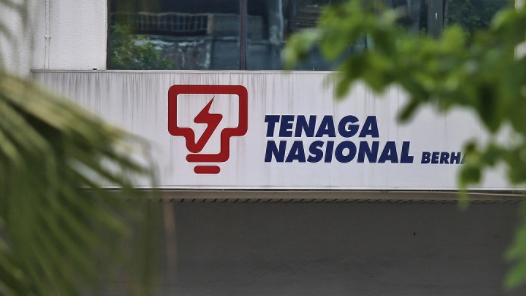PETALING JAYA: Tenaga Nasional Bhd (TNB) is anticipated to post improved financial results in its fourth quarter ended Dec 31, 2023 (4Q23) as it should be able to buffer higher year-end expenses with more stable fuel costs during the period.
UOB Kay Hian (UOBKH) Research noted the power utility should be able to reverse the negative fuel margins it faced in the nine months of 2023 (9M23), as coal prices had stabilised in the period.
TNB suffered a negative fuel margin of RM786mil in 9M23 versus a positive fuel margin of RM917mil in 9M22.
“While the absence of a negative fuel margin in 4Q23 bodes well for TNB, we expect the group to also book higher year-end expenses arising from general, repair and maintenance costs.
“We expect 4Q23 net profit to come in at RM1bil in the absence of a negative fuel margin,” the research house said in a report on TNB.
Moving into 2024, the power company could gain from the government’s policy to undertake targeted subsidies which should help TNB’s cashflow management.
UOBKH Research noted that for the first half of this year, about 15% of households will lose their two sen per kilowatt hour (kwh) rebate, which will lead to a 5% to 10% increase in the electricity tariff for about 15% of households.
Commercial and industrial users will continue to pay a surcharge due to high coal prices of 3.7-17 sen/kwh. This will help TNB reduce the overhang in trade receivables.
In addition TNB has received RM2.35bil since early November 2023 for a period claim of July-September 2023.
The balance will be paid by monthly installments until TNB fully recovers a total of RM4.6bil for the imbalance cost-pass-through (ICPT) under recovery for July-December 2023, the research house stated.
Another positive factor is TNB could see fresh demand for some 3,000 megawatt of power from the data centres being set up in the country and from sales of power to Singapore.
The improved sales will benefit its generation business in particular, which is also forecast to be listed on the local exchange very likely by next year.
TNB is also now in discussions with the energy regulator for Regulatory Period 4 (RP4), which will determine key factors like the return on regulated asset (ROA) it will make going forward.
Underpinned by the country’s ambition in the National Energy Transition Roadmap (NETR), the returns under RP4’s regulated asset is expected to be higher than that of RP3, which bodes well for TNB’s 2025-2027 profits, UOBKH Research said.
TNB, meanwhile, is expected to spend an additional RM35bil between 2025 and 2030 towards upgrading Malaysia’s power grid to ensure the infrastructure does not become an obstacle in the success of the NETR.
The money will be spent over RP4 and RP5.
“We expect RP4’s capital expenditure (capex) to be 20% to 30% higher with the inclusion of green infrastructure.
“We believe the higher capex will be positive for TNB, as it will be able to partly offset the potentially lower returns under the incentive-based regulation structure should the government reduce the ROA,” the research house said.
It added that the transmission lines must be upgraded and de-bottlenecking works will need to be undertaken while the battery storage system will likely come in only in RP5 as the storage system matures.
That said, TNB is a defensive investment which could yield 4.5% to 5% in 2023-2024 as UOBKH Research expects it to pay out dividends at the higher end of its guided payout range of 30% to 60% in 2023-2024.
Meanwhile, BK yesterday reported that TNB was forging a “transformative partnership” with China’s state-owned power utilities, aimed at revolutionising the Asean Power Grid or APG through cutting-edge, high-voltage direct current (HVDC) technology.
TNB president and chief executive officer Datuk Seri Baharin Din said the pivotal role of HVDC technology in fostering efficient power trading, seamless resource sharing and the integration of renewable energy sources among Asean nations.
“We are looking at potentially collaborating with China’s state-owned power utilities.
“The potential partnership with China’s state-owned utilities on HVDC projects is strategically designed to capitalise on their expertise and experience in developing complex HVDC projects in China and globally,” Baharin said.
 BeritaKini.biz Berita Viral Terkini di Malaysia
BeritaKini.biz Berita Viral Terkini di Malaysia





